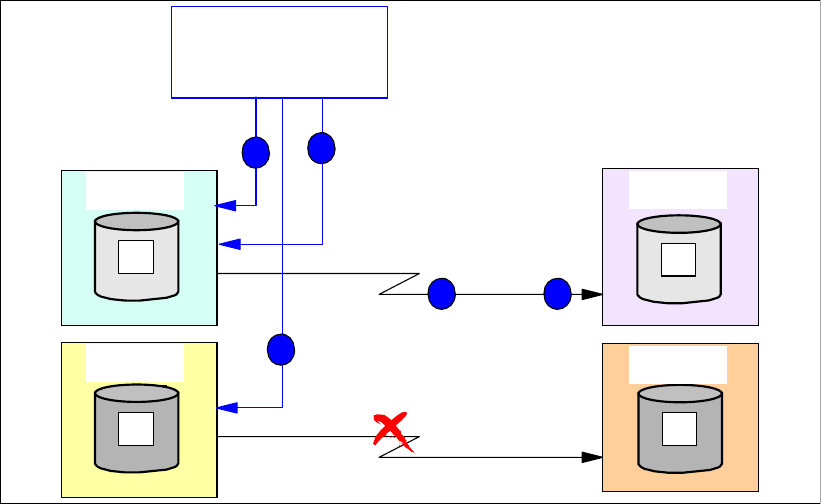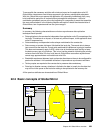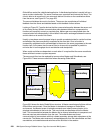
252 IBM System Storage DS6000 Series: Copy Services with IBM System z
Figure 22-6 Global Copy non synchronous data replication involving multiple disk subsystems
Notice that the numbers in Figure 22-6 indicate the transfer of data as well as the sequence of
its corresponding write I/Os. Record 3 may be replicated to storage disk subsystem 2 before
record 1 arrives to storage disk subsystem 2. Record 2 may never make it to storage disk
subsystem 4 due to the connectivity problem between storage disk subsystem 3 and storage
disk subsystem 4, which in turn may be the beginning of a rolling disaster. So, when using a
non synchronous technique like Global Copy, consistent data cannot be guaranteed at the
remote site without any additional measures, functions, and procedures.
The challenge is to provide data consistency at the distant site at any time and independent
of the combination of storage disk subsystems involved. One solution is to combine Global
Copy with FlashCopy and create a three-copy solution. This requires a series of additional
steps that have to be organized and carried out:
1. At the local site, temporarily pause the application write I/Os on the primary A volumes.
2. Wait for and make sure that the primary A volumes and the secondary B volumes become
synchronized. Note the challenge to manage all volumes.
3. Using FlashCopy, create a point-in-time (PiT) copy of the B volumes at the remote site.
4. The FlashCopy targets, that is the C volumes, will then hold a copy of the A volumes at the
time the application was paused or stopped. In this manner data consistency is kept at the
remote site.
5. Restart or resume the application write I/O activity to the A volumes
Global Mirror asynchronous technique
If we could incorporate the previous five basic steps into the storage disk subsystem internal
microcode, and we could count with the corresponding management interface, then this
would basically be an efficient asynchronous mirroring technique that would allow the
replication of data over long distances, without impacting the application I/O response time,
its operation would be transparent and autonomic from the users point of view, and most
importantly would provide a consistent copy of the data at the remote site at all times. All this
is what basically Global Mirror is about.
Replicate
Primary
Primary
A
Primary
Primary
A
2D00
Primary
Primary
A
Primary
B
3D00
Subsystem
Database
Primary
A
2C00
Primary
Primary
A
Primary
A
2D00
Primary
Primary
A
Primary
Primary
local site
A
2C00
B
3C00
non synchronous
Replicate
non synchronous
Storage Disk
Subsystem 3
Storage Disk
Subsystem 4
Storage Disk
Subsystem 1
Storage Disk
Subsystem 2
Log'
DB'
Log
DB
3
2
3 1
1
Secondary
remote site


















